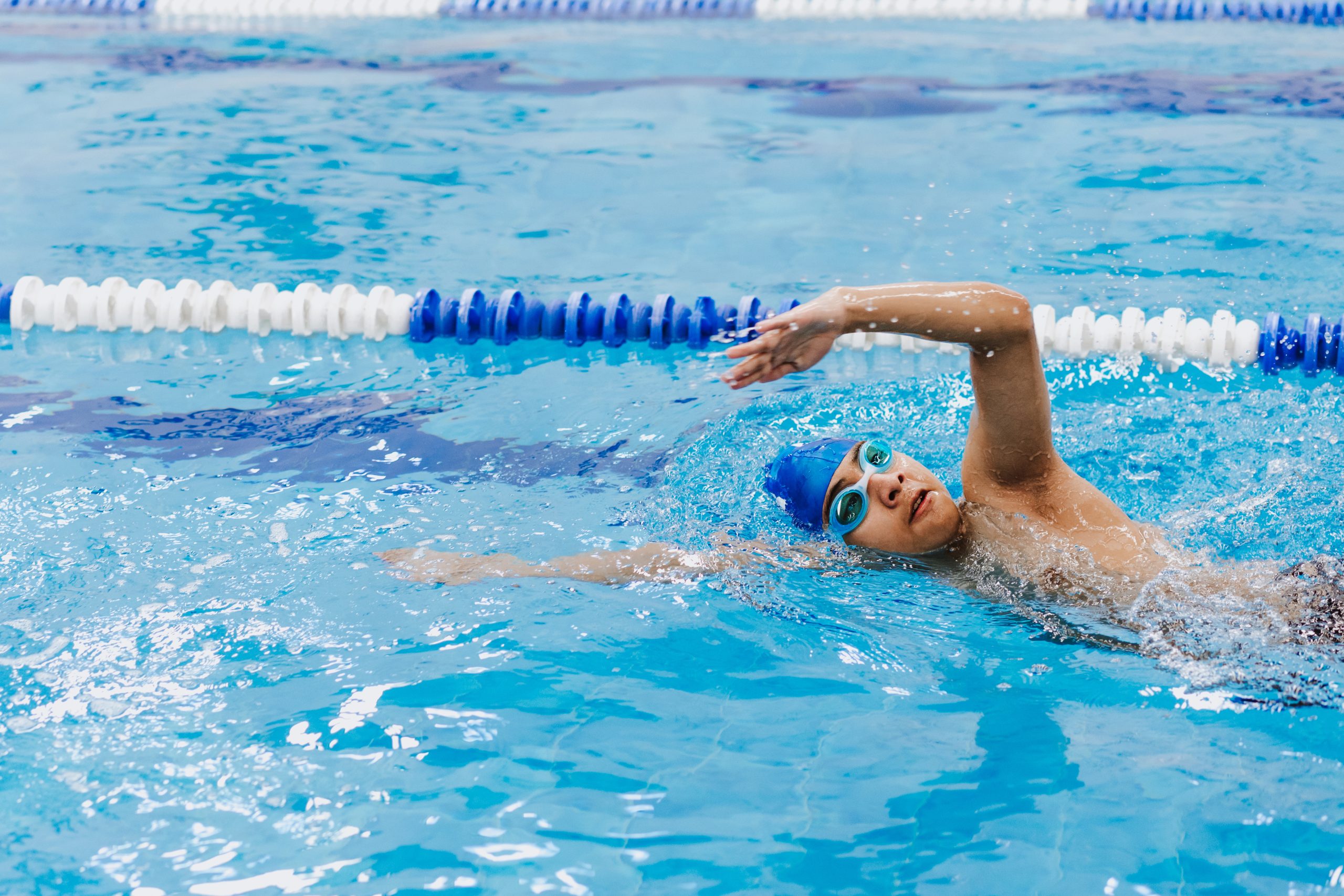Incorrect swimming techniques can lead to injuries. Using preventative measures will help you swim safer–whether it’s for leisure or exercise. Make the time to warm up and stretch before diving in. We know that cold muscles are more likely to be injured. So, warm up by walking around, running in place, or doing some jumping jacks for a minute or two. Take another minute or two to stretch your neck, core muscles, and limbs gently and slowly. The most common swimming injuries from incorrect swimming techniques and overuse affect the neck, shoulders, and knees.
NECK
Neck injuries that occur during swimming are usually because of the significant neck contortion that either keeps the head above water or helps with breathing during swimming strokes.
Preventing Injury
Be sure your head and neck are in alignment with your spine. Instead of twisting only your neck to the side to breathe, rotate your mid to upper spine along with your neck.
Recovery
Give your neck time to recover after swimming. Gentle stretching and using ice or cold treatment can help reduce inflammation and facilitate healing. Consider adding variety to your usual swimming routine and use different strokes.
SHOULDERS
Swimming strokes require specific arm, hand, and shoulder movements that can cause stress to the shoulder muscles, with strain particularly on the rotator cuff. Damage to the shoulder can happen due to new muscle use, repetitive use, and fatigue.
Preventing Injury
Review correct techniques for the strokes you use from reputable sources.
Recovery
Limit the use of your shoulder during re-
covery by avoiding activities that may rely on
the shoulder. Kick-board exercises may need to be avoided due to the positioning of the injured shoulder.
KNEES
While the breaststroke is a more relaxed swimming stroke, it can be uniquely demanding to the knees. Because the feet face outward, knee ligaments are impacted, sometime causing knee pain, inflammation, and swelling.
Preventing Injury
Vary your swimming routine with other strokes to help your knee strength and mobility. Use proper hip to leg angles when swimming the breaststroke. In addition, you can improve your leg muscle strength by performing body weight squats as a warmup.
Recovery
Give the knee time to recover by avoiding painful activities and ice your knee at least three times a day.
HOW A PHYSICAL THERAPIST CAN HELP WITH SHOULDER INJURIES
An article written by Juliane Morris. Shoulder injuries can cause pain that can range from dull and achy to excruciating and debilitating. They can also be pain-free, but unfortunately these injuries may limit range of motion due to tightness or weakness. Injuries such as rotator cuff tears, shoulder tendinitis, labrum tears, frozen shoulders and injury-induced shoulder osteoarthritis are more common than most people might think. Good news is that physical therapy can noticeably alleviate symptoms for the injured.
Chronic pain and stiffness are common, which may be a result of osteoarthritis (OA). OA can be caused by a general shoulder injury, occupational injury, sports injury, overuse issues, genetics or obesity. The American Family Physician Journal explains, “Osteoarthritis of the shoulder is a gradual wearing of the articular cartilage that leads to pain and stiffness.” For the individuals suffering from osteoarthritis, seeking out physical therapy will benefit them with pain relief, increased range of motion, and the ability to participate in their daily activities. A physical therapist can provide treatment and a plan of care to reduce
OA-related pain.
Physical therapists work to assess pain, limited range of motion, and weakness in the injured shoulder. These healthcare providers develop individualized programs and a projected time frame to decrease signs and symptoms with exercises, stretches, manual therapy, electrical stimulation, and more!
People who suffer from a rotator cuff tear, labrum tear, or shoulder tendinitis, have general weakness, making it difficult to raise their arm.
A Physical Therapist can improve strength and mobility to the injured tissue. For shoulder injury evaluations, a physical therapist may move your arm, ask you to raise your arm and resist a force, all at specific angles of elevation, testing strength, pain level, flexibility and coordination. Physical Therapy treatment may help some people avoid the use of prescription painkillers and help prevent or delay further injury and surgery. Enlisting the shoulder injury assessment and help of a Physical Therapist for both pain relief and increased movement can produce results such as reduced or eliminated pain and return to pre-injury range of motion, strength, flexibility and function!
